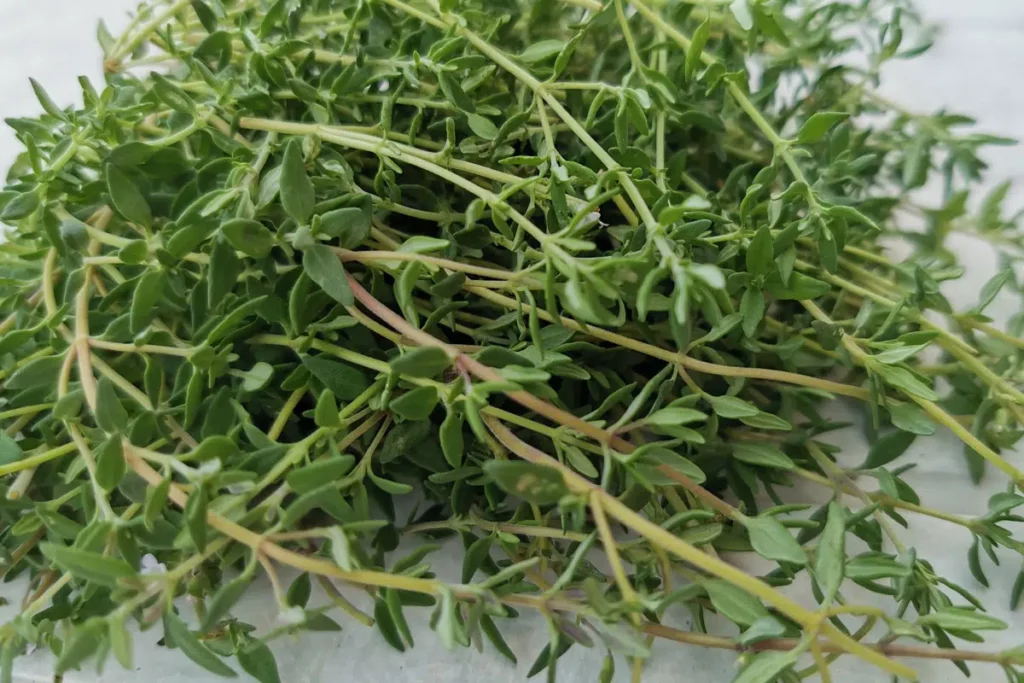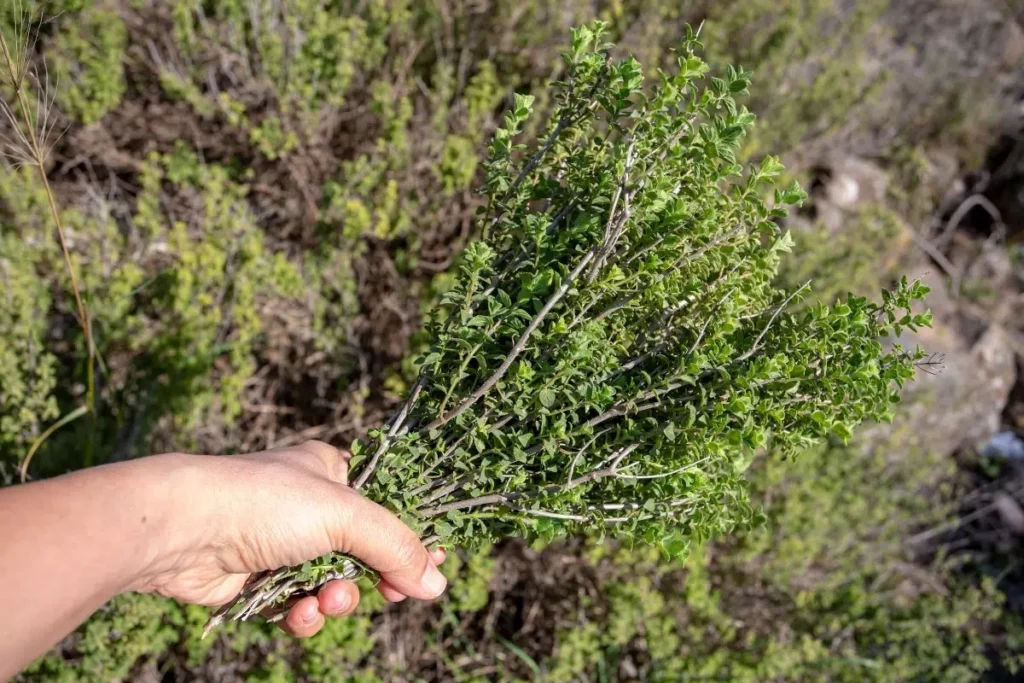Last updated on October 23rd, 2023 at 08:33 pm
Proper and regular pruning will maintain the vitality of thyme and prevent lignified shoots. The timing and method of pruning are crucial to how the plant develops.
- Use clean and sharp utensils for pruning.
- Plant pruning gives the future shape of the plants
- Make pruning into the old wood only if it can not be avoided.
Contents
Tool for cuts
Regardless of when you prune or what pruning you do, you should have the following tools available for pruning thyme.
- sharp knife
- Bypass scissors
- possibly herb or kitchen shears (for harvesting)
- possibly hedge shears (for larger bushes or creeping species)
Pruning utensils should be cleaned before and after use. To do this, you should clean the blades with hot water and dry them immediately afterwards to prevent rust from forming. By cleaning them, you prevent diseases from being transmitted from plant to plant. In addition, you should have the blades sharpened regularly. A good cutting edge will prevent branches from being bruised.
Note: Bruising causes the cuts to heal more slowly, which in turn provides a target for fungi and bacteria.
Plant pruning
Plant pruning is done after a new planting or division of large canes. As a rule, plant pruning is carried out in the spring, approximately between March and May, when new planting or division is carried out. If, in exceptional cases, planting takes place in the fall, do not perform plant pruning until the following frost-free spring.
Planting pruning sets the future shape, which is why it is especially important. If mistakes are made at this stage, they are often difficult to correct, and the thyme will take a long time to recover.
Instructions for plant pruning:
- Cut back shoots by one third
- cut back weak shoots by half
- remove damaged and dead shoots completely
- if growth is too dense, remove thick shoots
Tip: If the young plants are vital and stocky in growth, it is sufficient to shorten the tips with kitchen shears.
Harvest pruning
The best time for harvest pruning is just before the flowers form. Then the content of essential oils in the plant is the highest, which makes it very aromatic. Basically, a harvest cut can be done all year round.
For harvesting, use scissors. Harvest only the tips of shoots no more than finger length. The longer the shoots are, the less aromatic they are towards the bottom.
When harvesting cut proceed as follows:
- at least 24 hours before no rain
- pruning is done in the late morning
- after cutting, store the shoots in the shade on a kitchen towel for several hours
- wash only when absolutely necessary
Laying them out on a kitchen towel gives insects a chance to escape. Do not leave the thyme for more than a maximum of two hours, but process it quickly.

Maintenance pruning
Maintenance pruning is carried out on the one hand for flowering plants and on the other hand also when there are tendencies to lignification. In principle, there is nothing against flowering plants, they are very popular especially with insects and the flowers can also be used in the kitchen, even if they are no longer so aromatic. However, flowering takes a lot of energy from the plants, so it is important to cut them at the latest when they fade.
With the formation of flowers often comes the first woodiness and with a maintenance pruning you can still counteract this in time.
Instructions for maintenance pruning:
- Shorten shoots by one third
- cut back to the last pair of leaves at the most
- shorten central shoots only
Make sure that the spherical shape is even
The ideal time for maintenance pruning is summer. Even when the plants are in bloom, you can still do a harvest pruning in the fall if needed.
Note: When doing maintenance pruning, look for a spherical shape. This gives the plants stability and the shoots can develop evenly.
Rejuvenation pruning
Woody shoots often form on older plants. This cannot be avoided in plants that have reached old age. Therefore, larger plants should be regularly divided and rejuvenated. Nevertheless, it may be necessary to perform a rejuvenation pruning, for example, in the course of a division, during which woody shoots must be removed.

Rejuvenation pruning is always a difficult cut, if it is done incorrectly or at the wrong time, in the worst case, the thyme may die. Rejuvenation pruning should be done either in the spring when the plants begin to grow again or in the summer just before flowers are formed. In either case, the goal of the plant is to continue to develop or multiply, and this also increases the chance that it will better survive deep cuts into the old wood.
You should really only cut back into the old wood if it cannot be avoided. Also try to cut back to the last pair of leaves when rejuvenating. Only if it is absolutely necessary, woody parts without leaves may be removed. In this case, you must give the thyme enough time to grow leaves and shoots again in the woody parts. Often this may even take until the next season.
Tip: If 2-year-old shoots are removed during rejuvenation pruning, you can make cuttings from them and grow vigorous plants again.
Frequently asked questions
Can an anvil shear be used to cut woody shoots?
If bypass shears are not available, an anvil shear can be used if necessary. However, the risk of crushing plant parts is always present due to the mechanics of this type of shears, even if the cutting edge is sharp.
Can the thyme be cut several times a year?
In good locations, many plants literally explode. In this case, to maintain vitality and prevent lignification, it is indispensable to cut several times.


